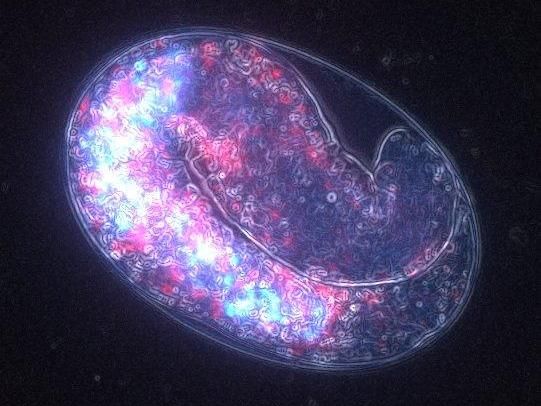Wave Motion - New Compounds for Molecule Interferometry Experiments
When waves meet, a new single wave is created. This phenomenon is well understood for mechanical waves such as sound, and electro-magnetic waves such as light, and the "interference" of light waves is applied in astronomy, fiber optics, and oceanography. The observation that even individual large organic molecules can delocalize over large distance and interfere — not with each other, but each one with itself — is rather new, and its study requires suitable substances. A team of chemists led by Marcel Mayor at the Universität Basel has recently designed a new series of compounds that were successfully used for interferometry experiments by a group of experimental physicists headed by Markus Arndt at the Universität Wien, as they report in the European Journal of Organic Chemistry.
Chemical functionalization allows the properties of the molecules to be tailored to the needs of the experiments. To be compatible with interferometry, compounds must be highly volatile, stable, and easily ionized. In order to understand the transition between quantum and classical mechanics, it is important to study molecules of increasing mass. The first two criteria can be met by highly fluorinated compounds. To meet the requirements of a high molecular mass and good detectability, the authors judiciously paired the fluorinated moieties to a porphyrin core.
The team presented a modular synthesis of seven fluorinated porphyrins. The aim of the authors was to cover a specific mass range and to optimize the design of the structures towards high volatility; their resulting synthetic strategy is straightforward and easily applied. The fluorine components are coupled to the outer parts of the porphyrins in the last step of the synthesis. They can thus be easily modified to fine-tune the interferometry experiments. Despite the high fluorine content of the porphyrins, these compounds could still be produced by established organic synthesis protocols.
The researchers showed that at least one of their prepared compounds met the criteria for thermal evaporation and stability, and the team plans to adopt the modular synthesis technique reported for the design of more specific, mass-limited, sublimable organic dyes for future molecule interferometry experiments.
Original publication

Get the analytics and lab tech industry in your inbox
By submitting this form you agree that LUMITOS AG will send you the newsletter(s) selected above by email. Your data will not be passed on to third parties. Your data will be stored and processed in accordance with our data protection regulations. LUMITOS may contact you by email for the purpose of advertising or market and opinion surveys. You can revoke your consent at any time without giving reasons to LUMITOS AG, Ernst-Augustin-Str. 2, 12489 Berlin, Germany or by e-mail at revoke@lumitos.com with effect for the future. In addition, each email contains a link to unsubscribe from the corresponding newsletter.
























































